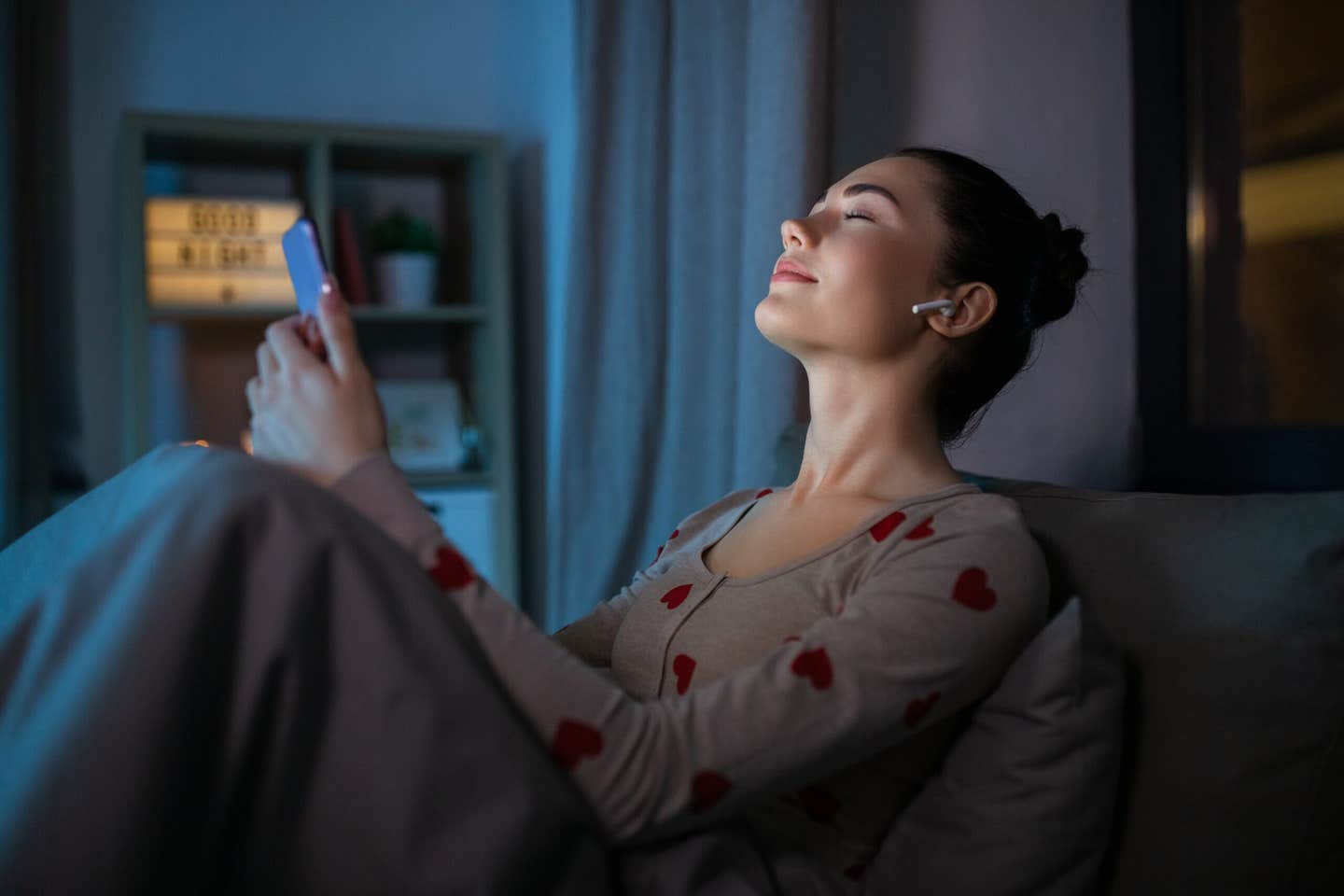Personalized sound therapy app offers new hope for millions suffering from tinnitus
A new app combining sound therapy and counseling shows promise in easing tinnitus, offering hope to millions worldwide.

A smartphone-based therapy developed in New Zealand could finally make tinnitus manageable. (CREDIT: Shutterstock)
If you’ve ever experienced ringing, buzzing, or phantom sounds in your ears that no one else can hear, you know how disruptive tinnitus can be. This condition touches anywhere from 5% to nearly half of the population depending on how it’s defined.
While it isn’t a disease itself, tinnitus can take a heavy toll on daily life. It often disrupts sleep, concentration, and even mental health, fueling stress, depression, and anxiety.
Why Tinnitus Is So Complex
The challenge with tinnitus is that it doesn’t come from a single, simple cause. Scientists believe it stems from faulty brain activity, often triggered by hearing loss or head injury. But how strongly you notice the phantom sounds also depends on other influences like background noise, memory, focus, mood, and even personality traits. Because of this wide variation, one-size-fits-all treatments rarely succeed.
Over the years, therapies have focused on making tinnitus less bothersome rather than curing it. Cognitive Behavioral Therapy (CBT) is one proven way to help people cope with the distress tinnitus brings. Sound therapies such as hearing aids, noise-masking devices, or simple apps that play static can sometimes soften its impact.
Other approaches, including Tinnitus Retraining Therapy (TRT), acoustic stimulation, or even pairing sound with tongue stimulation, have shown some benefit but inconsistent results.
The Search for Better Solutions
That mixed track record has pushed researchers toward personalized treatments. Instead of prescribing the same therapy to everyone, scientists are beginning to tailor strategies based on each person’s tinnitus profile and goals. The idea is to match the right type of therapy to the individual, much like a custom-made plan rather than a generic prescription.
Related Stories
- Light-based therapy may finally offer relief for millions of tinnitus sufferers
- New tinnitus treatment promises relief for millions of Americans
A major step in this direction is a new digital tool developed at the University of Auckland. Researchers there created a smartphone-based program called UpSilent, designed to combine several therapeutic strategies into a single, portable app. The app blends three core features:
- Passive listening to calming or retraining sounds.
- Active listening exercises that train the brain to shift focus away from tinnitus.
- Counseling guided by the AREA model, which stands for Attention, Reaction, Explanation, and Adaptation, teaching people how to cope and adapt.
Testing the Digital Approach
To see if the app truly worked, the Auckland team ran a 12-week clinical trial comparing UpSilent with a widely used white noise app. Sixty-one participants set personal treatment goals and used the apps daily. Their progress was measured using the Tinnitus Functional Index (TFI), a standard scoring system where a drop of 13 points signals meaningful improvement.
The results were promising. About 65% of those using the new app reported noticeable improvement, and some described life-changing benefits. Audiology research fellow Dr. Phil Sanders observed, “For some, it shifted from overwhelming their lives to being manageable.”
Associate Professor Grant Searchfield, who led the study, explained the goal this way: “This therapy de-emphasizes tinnitus, relegating it to background noise with no meaning or relevance.”
The findings, published in Frontiers in Neurology, revealed significant gains in both tinnitus severity and mental well-being compared to the white noise app. While larger studies are still needed, the success of this digital therapeutic shows that accessible, personalized tools may finally offer widespread relief.
What Makes Tinnitus So Hard to Treat
Part of the difficulty lies in how differently tinnitus appears in each person. For some, it’s a faint background hum, while for others it’s a loud, piercing buzz that never stops. Environmental factors, psychological predispositions, and even changes in neural circuits can shape the experience. This variability makes it nearly impossible for a single therapy to work for everyone.
Researchers are now building flexible tools that can adapt to each patient’s needs. Combining counseling with interactive sound therapy and guided exercises, digital platforms like UpSilent can be personalized in real time. By tracking progress and adjusting treatment, these apps may succeed where rigid methods have failed.
The Global Push for Innovation
The University of Auckland study isn’t happening in isolation. Teams around the world are working to refine neuromodulation, retraining therapies, and digital health solutions. One collaboration involves the German company Tinnitracks, which developed a platform later enhanced for the New Zealand trial. These international efforts highlight the shared urgency to find solutions for a condition that has long defied treatment.
Still, there’s more work ahead. Researchers stress the need for larger trials to confirm results across diverse populations and test long-term effects. There’s also interest in combining digital tools with other treatments, including medications, to boost outcomes.
Risks, Complications, and Prevention
Certain factors make tinnitus more likely, including exposure to loud noise, head injuries, cardiovascular conditions, obesity, and arthritis. Age also plays a role, since hearing nerve fibers decline over time, and men appear more prone to tinnitus than women. Smoking, alcohol, and caffeine may worsen symptoms.
When tinnitus becomes severe, it can spark complications like fatigue, poor concentration, sleep problems, irritability, headaches, or strained relationships. These ripple effects can be just as challenging as the condition itself.
Prevention is still the best medicine. Experts recommend wearing ear protection in noisy settings, keeping headphone volumes reasonable, and protecting cardiovascular health with exercise and a balanced diet. Avoiding excess alcohol, nicotine, and caffeine may also help reduce risk or severity.
Practical Implications of the Research
The development of digital therapeutics like UpSilent could transform how tinnitus is managed worldwide. Instead of relying on limited clinical access, people could carry a personalized therapy program in their pocket. This not only expands accessibility but also empowers individuals to take an active role in their treatment.
If larger trials confirm these early results, digital apps could become the new standard of care, potentially replacing or complementing traditional sound therapies. With millions affected globally, the ability to turn tinnitus from a life-dominating problem into a manageable background noise would represent a breakthrough for public health and quality of life.
Note: The article above provided above by The Brighter Side of News.
Like these kind of feel good stories? Get The Brighter Side of News' newsletter.



